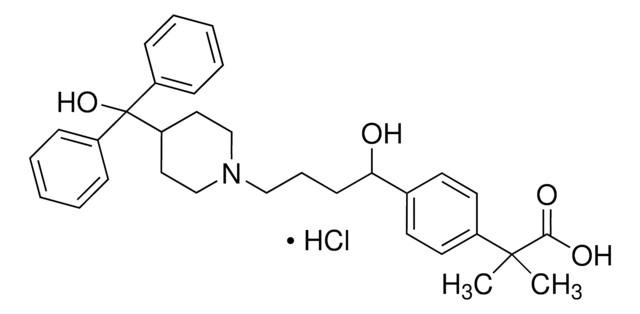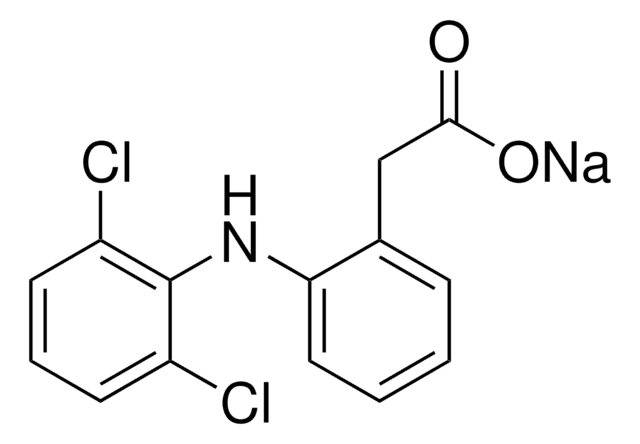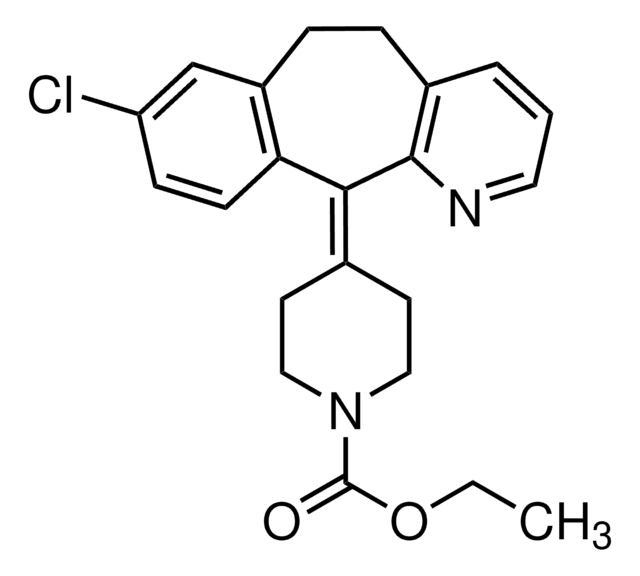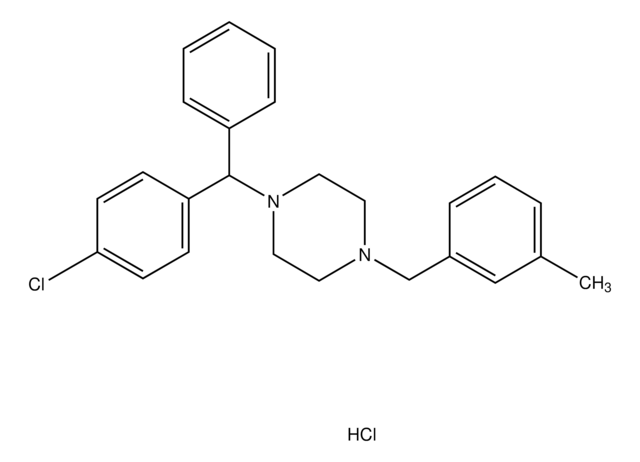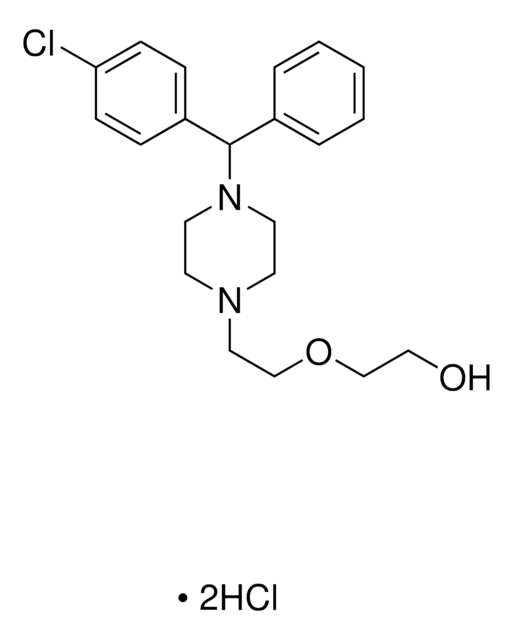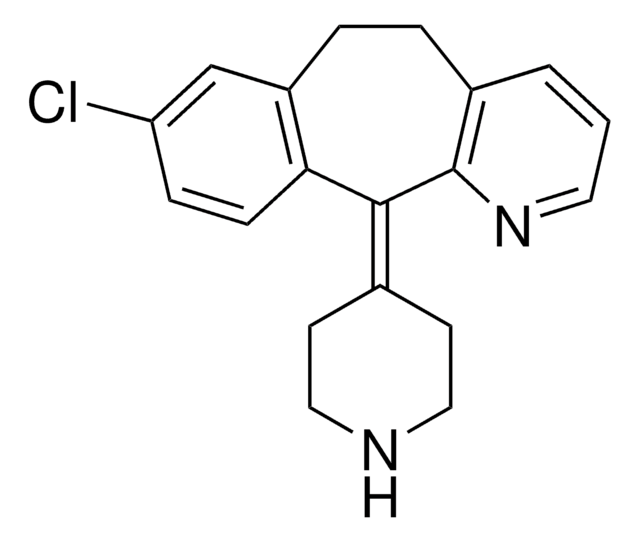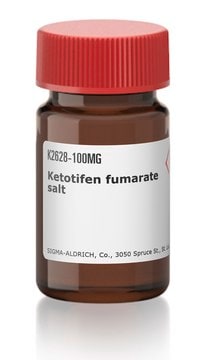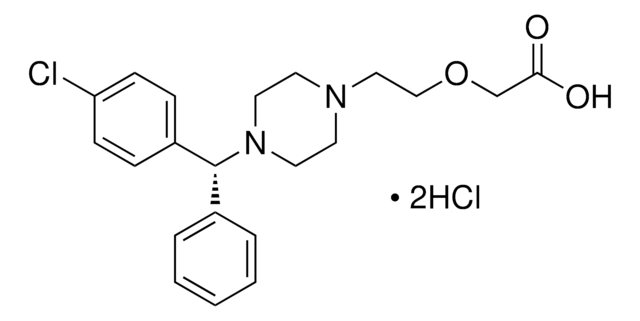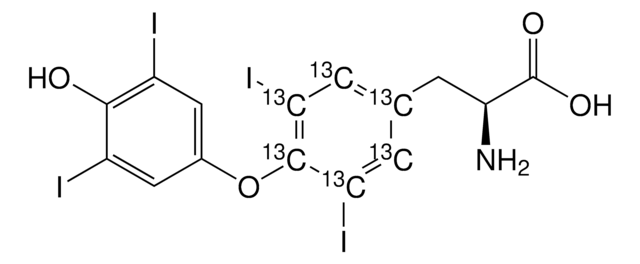Kluczowe dokumenty
F9427
Fexofenadine hydrochloride
>98% (HPLC)
Synonim(y):
Fexofenidine hydrochloride, MDL 16455 hydrochloride, Terfenidine carboxylate hydrochloride
About This Item
Polecane produkty
Próba
>98% (HPLC)
Formularz
powder
warunki przechowywania
desiccated
kolor
white to beige
rozpuszczalność
DMSO: soluble ≥5 mg/mL
inicjator
Sanofi Aventis
temp. przechowywania
−20°C
ciąg SMILES
Cl[H].CC(C)(C(O)=O)c1ccc(cc1)C(O)CCCN2CCC(CC2)C(O)(c3ccccc3)c4ccccc4
InChI
1S/C32H39NO4.ClH/c1-31(2,30(35)36)25-17-15-24(16-18-25)29(34)14-9-21-33-22-19-28(20-23-33)32(37,26-10-5-3-6-11-26)27-12-7-4-8-13-27;/h3-8,10-13,15-18,28-29,34,37H,9,14,19-23H2,1-2H3,(H,35,36);1H
Klucz InChI
RRJFVPUCXDGFJB-UHFFFAOYSA-N
informacje o genach
human ... HRH1(3269)
Szukasz podobnych produktów? Odwiedź Przewodnik dotyczący porównywania produktów
Zastosowanie
Działania biochem./fizjol.
Cechy i korzyści
produkt powiązany
Kod klasy składowania
11 - Combustible Solids
Klasa zagrożenia wodnego (WGK)
WGK 3
Temperatura zapłonu (°F)
Not applicable
Temperatura zapłonu (°C)
Not applicable
Środki ochrony indywidualnej
Eyeshields, Gloves, type N95 (US)
Wybierz jedną z najnowszych wersji:
Certyfikaty analizy (CoA)
Nie widzisz odpowiedniej wersji?
Jeśli potrzebujesz konkretnej wersji, możesz wyszukać konkretny certyfikat według numeru partii lub serii.
Masz już ten produkt?
Dokumenty związane z niedawno zakupionymi produktami zostały zamieszczone w Bibliotece dokumentów.
Klienci oglądali również te produkty
Powiązane treści
Poznaj analizę szlaków białkowych, w tym przesiewanie bibliotek chemicznych i modulowanie szlaków za pomocą małych cząsteczek.
Poznaj analizę szlaków białkowych, w tym przesiewanie bibliotek chemicznych i modulowanie szlaków za pomocą małych cząsteczek.
Nasz zespół naukowców ma doświadczenie we wszystkich obszarach badań, w tym w naukach przyrodniczych, materiałoznawstwie, syntezie chemicznej, chromatografii, analityce i wielu innych dziedzinach.
Skontaktuj się z zespołem ds. pomocy technicznej